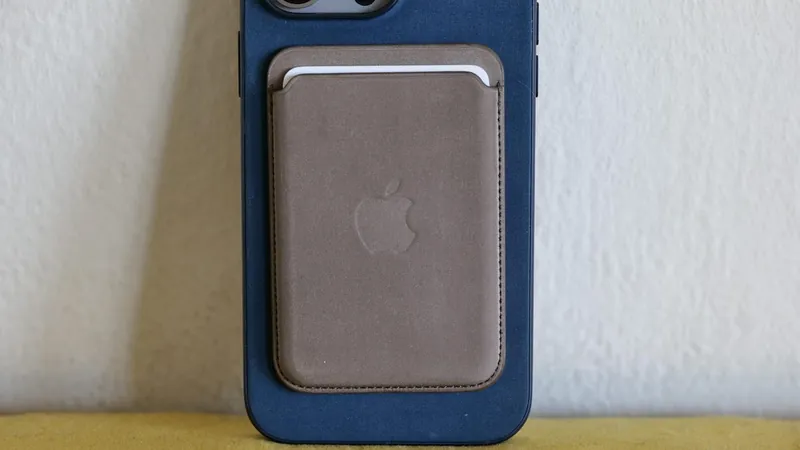
Shocking Discovery in the Deep Ocean Suggests Clues to Life's Origins
2024-09-27
Groundbreaking Study by Ryuhei Nakamura
In a groundbreaking study led by Ryuhei Nakamura at Japan’s RIKEN Center for Sustainable Resource Science and the Earth-Life Science Institute (ELSI), researchers have revealed astonishing findings about deep-ocean hydrothermal vents.
These vents, long suspected to be the cradle of life on Earth, are now shown to host intricate inorganic nanostructures remarkably akin to the components necessary for life itself.
Published Research and Key Findings
Published on September 25 in the esteemed journal Nature Communications, the research uncovers self-organizing nanostructures that function as selective ion channels, capable of generating energy in electrical form.
This discovery not only provides fresh insights into the origins of life, but also carries exciting implications for harnessing blue energy—an environmentally friendly energy source derived from the ocean's saline gradients.
Understanding Hydrothermal Vents
The research focuses on these hydrothermal vents, which are formed when seawater seeps deeply into the Earth, gets heated by magma, and then escapes back into the ocean through fissures.
This process is rich in mineral content, creating chemical reactions that lead to the formation of solid minerals, known as precipitates, as hot water emerges into cooler ocean depths.
The Birthplace of Life
Hydrothermal vents are believed to be the birthplace of life due to their stable, mineral-rich environments and energy sources.
With life on Earth relying heavily on osmotic energy—energy derived from differences in ion concentrations—Nakamura and his team set out to explore serpentinite-hosted vents that exhibit complex layered structures made up of various metal oxides and carbonates.
Surprising Discoveries
To their surprise, researchers found that the conditions within these vents allow for osmotic energy conversion, a process believed to be a hallmark of modern biological systems.
The team firmly established that the samples taken from the Shinkai Seep Field in the Mariana Trench, resting 5,743 meters deep, contained a significant piece of brucite—a mineral crucial for their experiments.
Microscopic Imaging and Findings
Microscopic imaging and advanced scanning techniques unveiled that brucite crystals form nano-channels, enabling electrical charges to flow through them.
These channels, much like the ion channels found in living cells, displayed variable electrical charges—confirming the potential for natural osmotic energy conversion in these geological formations.
Conductance and Ion Transport
Through rigorous testing with concentrated potassium chloride, researchers observed a proportional conductance correlating to ion concentration at the surface of these nanostructures.
At reduced concentrations, however, the conductance remained constant, indicating that the local electrical charge dictated ion transport, paralleling processes seen in neuronal activity.
Implications of Discoveries
Further experiments showed that these nanopores selectively permitted ion passage, a discovery that aligns with major theories about life's origins.
'The spontaneous formation of ion channels in deep-sea hydrothermal vents has profound implications for the understanding of life’s earliest beginnings, both on Earth and beyond,' remarked Nakamura.
Potential for Blue Energy Harvesting
This revelation may also pave the way for industrial advancements in blue-energy harvesting.
By understanding and mimicking the natural processes observed in these deep-ocean environments, researchers could develop innovative techniques for generating electrical energy from osmotic conversion.
Conclusion and Broader Impact
The implications of this study extend beyond just academic intrigue.
They challenge existing theories about life's origins and push the boundaries of how we perceive energy generation from oceanic resources.
With the search for extraterrestrial life continuing, this newfound knowledge could have ramifications on our understanding of similar environments elsewhere in the universe.
This cutting-edge research not only positions hydrothermal vents as vital to our planet's life-sustaining processes, but it also shines a light on the technological possibilities that could emerge from understanding these natural phenomena.
Get ready to reconsider everything you thought you knew about the origins of life!

 Brasil (PT)
Brasil (PT)
 Canada (EN)
Canada (EN)
 Chile (ES)
Chile (ES)
 España (ES)
España (ES)
 France (FR)
France (FR)
 Hong Kong (EN)
Hong Kong (EN)
 Italia (IT)
Italia (IT)
 日本 (JA)
日本 (JA)
 Magyarország (HU)
Magyarország (HU)
 Norge (NO)
Norge (NO)
 Polska (PL)
Polska (PL)
 Schweiz (DE)
Schweiz (DE)
 Singapore (EN)
Singapore (EN)
 Sverige (SV)
Sverige (SV)
 Suomi (FI)
Suomi (FI)
 Türkiye (TR)
Türkiye (TR)